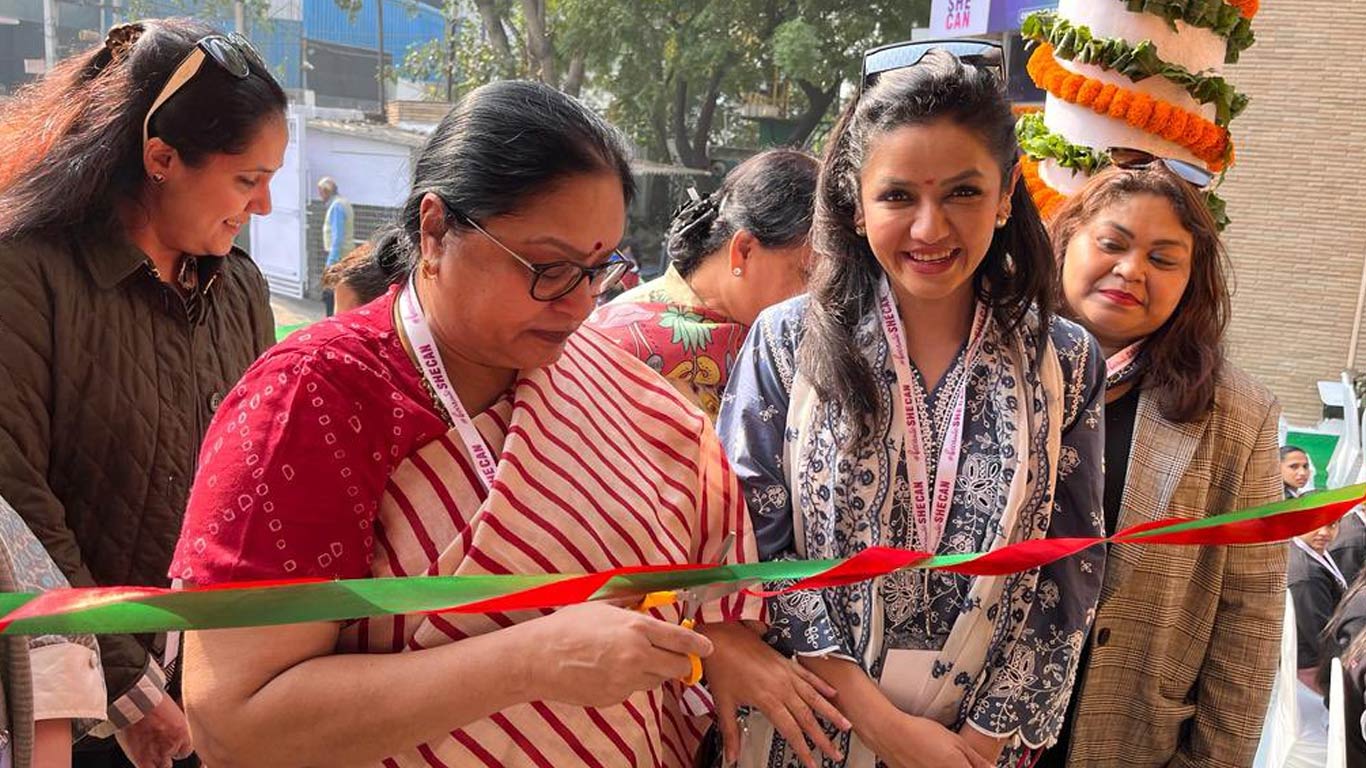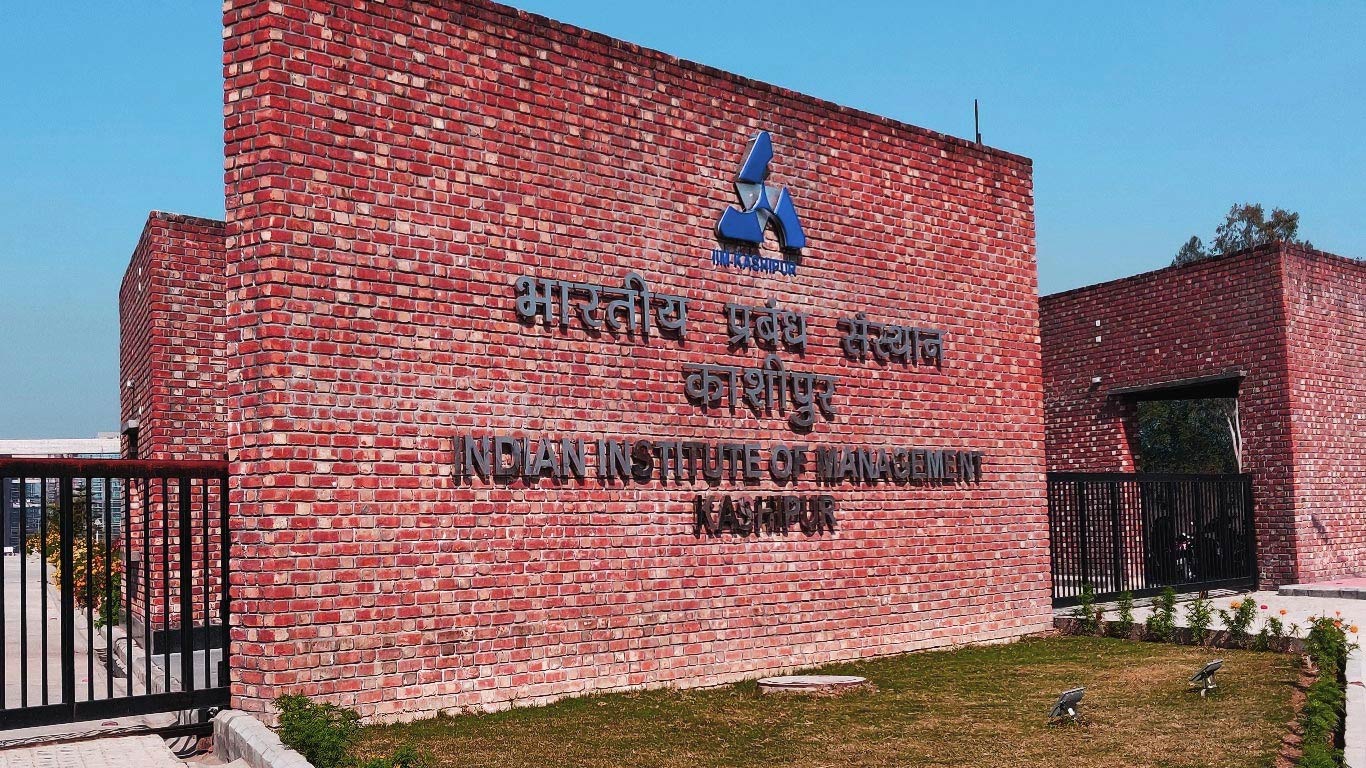The Global Architecture of Micro, Small and Medium Enterprises, 2014
Updated: Oct 10, 2014 03:10:27pm

1. Machines against People
Technology itself eating into human capabilities is a much recent phenomenon. The pace of automation has picked up in recent years because of a combination of technologies including robotics, numerically controlled machines, computerized inventory control, voice recognition and online commerce. Automation is rapidly moving beyond factories where labour displacement conventionally used to take place. More recently, it is spreading to parts of the services sector, such as, call centres, marketing and sales, which provides most jobs in the economy. The paradigm of “machines against people” also implies a trend from ‘atomism’ to ‘ecosystem’. Neoclassical economic theory and Keynesianism, based on their theoretical assumption of economic idealization, considered the atomic role of economic actors as crucial in deciding the dynamics of an economy. The latest developments in theory focus on a total system approach to business analysis. Lansiti and Levien (2004) explain “what the new dynamics of business ecosystems mean for strategy, innovation, and sustainability”.
Enterprises today are increasingly linked to each other through flows of goods, services, investment, finance, people, and knowledge. At the same time, the global enterprise system is also linked with, and is increasingly impacting ecosystems elsewhere, and in a larger dimension. The web of connections linking one ecosystem and one country with the next, is escalating across all scenes both in space and time. The world enterprise system got transformed to such an extent that everyone is now in everyone else’s backyard (UNU, 2003). While small enterprises are crucial as an analytical category, from an operational point of view, it is necessary to understand this sector as part of a totality. This totality, which can be called the enterprise ecosystem or business ecosystem, involves a continuum of large and small enterprises, which interact according to economies of scale and specialization often demonstrating an excellent example of division of labour.
According to Moore (1996) who coined the concept of ecosystem, it is crucial to highlight, an economic community supported by a foundation of interacting organizations and individuals—the organisms of the business world. This economic community produces goods and services of value to customers, who themselves are members of the ecosystem. The member organizations also include suppliers, lead producers, competitors, and other stakeholders. Over time, they co-evolve their capabilities and roles, and tend to align themselves with the directions set by one or more central companies, or try to compete with them collectively. Those companies holding leadership roles may change over time, but the function of the ecosystem leader is valued by the community, because it enables members to move toward shared visions to align their investments and to find mutually supportive roles. These can also be a mixed situation of competition and cooperation. The concept of an ecosystem and associated methods became part of the standard practice of strategy making among MNCs. The concept has since been applied more broadly to a variety of problems in designing network-centric strategies.
In the Lansiti and Levien schema, in recent years, in industries as different as personal computers and personal care products, “companies [have] leveraged multiple organizations in distributed supply chains, integrated technological components from a variety of business alliances, collaborated with a number of channel partners to distribute their products, and leveraged complementary services from banks, insurance providers, or retailers.” Many industries, thus, have been forced to create or become involved in a fully networked structure, one “in which even the simplest product or service is now the result of collaboration among many different organizations.” The concept was in its embryonic state when, decades ago, American Airlines devised the “hub and spoke” strategy; the Lansiti - Levin theory goes much beyond this, and is grounded on a network concept. (eg. Microsoft and Wal-Mart). A “keystone” business entity is central to such a model.
The concepts of “ecosystem” and “keystone companies” that are central to the respective ecosystems, have been theoretical innovations. On the strategy front, the implication of the model is this. Organizations today, regardless of their size or nature, must decide: a) whether they are a keystone or niche “player”; b) formulate strategies appropriate to that role; and c) establish and build on one of the three “foundations of sustainable performance in a business ecosystem.”
All organizations involved in a given ecosystem must, of course, rigorously monitor and also take an active role in nourishing that system’s health so as to promote and facilitate the leveraging of an enduring and evolving core. Keystones provide both the vision and the leadership needed, especially in response to market design, operation, and competition.
2. The Real Economy at Halt
The subject of SME has, of late, been discussed largely in a context of private enterprise development. With the decline of a bipolar world, the dominant thinking and practice in development discourse today is, one of a reduced role of the government, with a corresponding escalation of the role of the market. Private enterprise has an enormous influence on human and economic development around the world today. Businesses provide goods and services that meet essential human needs, create jobs and wealth in communities, and produce technologies that enhance the quality of life and productivity of the economy. These important functions, however, often come at the expense of the environment and social conditions. Excessive extraction of natural resources, emission of pollutants, and overall large environmental footprint, and direct impact on human health and access to resources that communities depend upon, are some of the negative consequences. Despite the above negatives, the private sector has a critical role to play as a provider of solutions for the society to live in ways that meet the needs of current and future generations. As the influence of the private sector grows around the world, NGOs have a unique opportunity for collaboration with the private sector and to steer business investment and innovation toward finding solutions to environment and development challenges. The role of the private sector is now recognized by governments, business and development agencies, round the world, as potential provider of solutions to major sustainable development challenges – reducing poverty, enhancing livelihoods, protecting ecosystems, tackling climate change, and meeting the Millennium Development Goals. The private sector also recognizes emerging business opportunity in designing or modifying business models specifically to address such issues. But, to date, this evolution has been partial and ad hoc. Many innovative pilot initiatives have succeeded at the micro-level, but crucially failed to achieve success at scale.
3. Growth of the Rental Economy
The relative share of the ‘real economy’ and the ‘rental economy’ is a key policy concern today. Named ‘collaborative consumption’, the concept behind the growing rental economy, is to increase the efficiency of goods by providing them on a variable cost basis (sharing their use). Obviously, this is not a new trend. But the ‘rental economy’ is rapidly expanding because the Internet, the Cloud and advanced analytics are enabling cost effective renting / sharing of a growing array of goods and services that were hitherto available primarily through ownership. While collaborative life styles are a rather new concept in the crisis-prone countries on North America and Europe, such a life style is part and parcel of the ‘urban informal sector’ of developing countries which came into prominence in the 1990’s. Sharing a cup of tea (popularly known in India as a “a cutting”, meaning half-a glass), sharing an auto rickshaw, and sharing of taxi in big cities, are very common. Time-sharing of resorts and office facilities is at least half a century old practice in India.
Like ‘cluster development’ and ‘micro finance’, the terms “collaborative consumption” and “sharing economy” are going to be the catch-words of development literature tomorrow. According to the Time Magazine,” collaborative consumption will be one of the ten ideas that will change the world”. These terms are used to describe a fascinating new economic and social phenomenon, reminiscent of the erstwhile joint family system, where all ‘facilities’ were extensively and intensively used by all co-partisans, whereby idleness was kept to the absolute minimum. They visualize a social and economic system driven by network technologies that enable the sharing and exchange of all kinds of assets, from spaces to skills, to cars, in ways and on a scale never possible before. For the West, it is a curious phenomenon: part counter-culture movement reminiscent of the 60s, and part radical economics, forging new scale economies in the same way that globalization did. For the East it is a home-coming or lost and found.
All the above developments depend on new technologies to enable the peer-to-peer markets. But, unlike stock exchanges and book-buying, many of them exist to facilitate real flesh-and-blood interactions. Subletting one’s house or apartment to someone, or simply hosting an out-of-town visitor, is no trivial social exercise. And lending out one’s car or tools, while not necessarily social, involves a social and financial risk.
4. ‘Necessity Entrepreneurship’ Boom
Occupational transition, from salaried to the self-employed, is an important issue in developed economies, but is even more critical in emerging economies, as individuals’ occupational choices can drive economic development. Using data on 3637 individuals from India, Wennekers et.al (2005) examine the effect of regional factors on actual and intended transition. They find that self-employment and unemployment rates decrease actual and intended transition, and the effects are at least four times greater than that of individual-level factors. In addition, they also find that urban versus rural location moderates the effects of income ratios and state GDP, with the effects being greater in rural locations.
In a predominantly agrarian economy, the change, in fact, has to happen in favour of more of nonfarm occupations. Contrary to such expectations, the 66th Round of the NSSO has shown a significant decline in self-employment. Non-agricultural employment has almost halved, and more specifically for female workers. This reaffirms a trend that was reported in the previous survey conducted in 2007-08.
New- job creation in India has been primarily driven by self-employment, which accounts for half of the total Indian workforce (Ghosh and Chandrashekhar 2007). This may not be an opportunity-driven phenomenon, since nearly half of the self-employed persons report that their work does not provide them with sufficient income (Ghosh and Chandrashekhar 2007). This finding supports the well-known “Parker hypothesis”. Parker (2004) points out that, if high unemployment results in a lack of demand for services and products provided by the self-employed, increasing their risk of bankruptcy, individuals are theoretically pulled out of their self-employment, leading to a “prosperity-pull” and vice versa. Parker’s ‘push- pull hypothesis’ explains how self-employment behaves during recession and in times of prosperity (Parker (2004).
The push-pull hypothesis has been substantiated by international data as well. An international comparison of small business employment by John Minch, (2009), of the Centre for Economic Policy Research, concludes that, contrary to popular perceptions, the United States has a much smaller small business sector in terms of employment, than other countries, at a comparable level of economic development. They observe that the undersized US small business sector is consistent with the view that, high health-care cost discourages small firm business formation. They also compare and point out that start ups in other countries can tap into government funded healthcare systems. In USA, the risk perception of becoming an entrepreneur is greater, because the social safety nets are lower there. Since the USA does not provide universal health care, and the free market for insurance is prohibitively expensive, many Americans who might otherwise look to start a business, instead, join a company for the tax-deductible employer-provided health benefits (Schmitt and Lane, 2009). In the US, GDP growth has stalled and overall employment has actually dipped in the private sector over the last ten years (Mandel, 2011). The recent debate on the subject throws significant light on global strategies of enterprise development. It also gives lessons for India.
Entrepreneurs are the agents behind major structural changes in the economy. Therefore, their perspectives and behaviour matter significantly in shaping the direction of change in the economy. How does entrepreneurship sprout and grow? International data gives some important insights, though much of such data relates to North America and Europe. According to Robert Litan, at the Kauffman Foundation, which specialises in promoting innovation in America; “between 1980 and 2005, virtually all net new jobs created in the US were created by firms that were five years old or less, ie., about 40 million jobs. That means, the established firms created no new net jobs during that period.” The message is that, in order to bring down unemployment in a sustainable way, rescuing corporations and public works will not help. A big bushel of new companies have to be set up. It was reported that Social Security in US this year, will pay out more in benefits than it receives in payroll taxes — a red line that is not expected to be crossed until at least 2016.
Against the background of the global economic crisis, entrepreneurship development is a key area of concern for governments today. But, good-paying jobs do not come from bailouts, they come from real start-ups. And where do start-ups come from? They come from smart, creative, inspired risk-takers. Such risk takers often come from socially marginalised groups, or from those who are school drop-outs.
Business is part of society and reflects its values. The very ordinariness of entrepreneurship in American commerce suggests that society prizes originality and improvement, and the human traits that enable both. Thus, entrepreneurship transcends business practice. It’s a distinctive kind of human agency that derives from business but can operate in any realm of human endeavour. Entrepreneurship also is a basic exercise in social responsibility.
To suppress or constrain innovation and improvement—and their implementation ignores a society’s needs and wants, holds it back, and diminishes its future. While public policy in India, from time to time, has considered entrepreneurship and self-employment as crucial items of the policy agenda, the actual status of the same remain unclear. Occupational transition from wage labour to self-employment is generally considered as a positive factor in development discourses. In fact, over time, this has emerged as a convenient factor under globalization and economic reforms, where the developmental role of government itself got progressively eroded.
Since the global economic crisis hit, the number of people with jobs, in the industrialized countries, has been steadily decreasing. This is likely one of the reasons that people are turning to self-employment. In India, the more recent developments indicate that, this type of an argument has become more realistic and valid. While earlier, public programmes of entrepreneurship development were offered as the only ideal choice for a person who has no opportunity of wage employment, or is not willing to accept such employment, because of lower wages at a particular level of skills. Today, the government itself offers options such as NREGA. The market offers, greater incentives for even the low skilled hands in terms of higher average wage rates. In the Indian context (even with a poor insurance system) these alternative opportunities offer disincentives for becoming an entrepreneur. Another important case of alternative opportunity is migration. The case of Kerala demonstrates an important example. Having a significant migratory behaviour of its population the next best option of any economic activity in Kerala is migration, rather than skill up gradation, and the marketing of better skills for higher wages or entrepreneurial activities. Strategic thinking is a critical aspect that adds to the process of innovation. However, the evidence available from the field does not demonstrate this as a key feature of MSEs in Kerala. There are some key influences on entrepreneurship, which have been explained in terms of two sets of episodes, i.e. 1) objective episodes; and 2) subjective episodes. While in many other parts of the country, entrepreneurs are highly responsive (and even aggressive), Kerala entrepreneurs express a neutral opinion on these episodes as they are reflected in personal and professional life. (Mathew, 2010)
Self-perception is an important factor and a drive mechanism of dynamic entrepreneurs. However, the responses available from the MSME entrepreneurs, show that a state of stagnancy is perceived by the majority of the entrepreneurs and that they remain comfortable with the present state. Such self-perception is a major constraint for growth, as indicated by the model. Since there is a poor demand from below, neither the entrepreneurs, nor their membership organizations take their case to the advocacy level.
Entrepreneurship in India is in a transitional stage today. On the one hand, a large number of start-ups have come into the stream through various self-employment programmes. At the other end, they are deprived of vital resources (including human resources) and support services, essentially became of various public interventions (eg: NAREGA). The sum total of all these is that, start-ups of a productive kind are diminishing significantly. Unlike options available to a wage worker, the typical entrepreneur has very limited choices, because of the prevailing exit policy in the country, as also for the cultural factors by which the entrepreneur remains pegged with his occupation. The most common type of one-man enterprises, found significantly in States like Kerala, Assam and UP, have come into being under government programmes such as, the Self-employment Programmes of the 1970s.These entrepreneurs today are virtually subject to a low productivity-low growth ratchet, which can best be described as an ‘entrepreneurship ratchet effect’. They often need a loop in order to get out of such a ratchet.
5. Race to the Local Economy
Local purchasing’ is a preference to buy locally produced goods and services over others. “Buy local”, as a movement, parallels the phrase “think globally, act locally”. At the national level, the equivalent of ‘local purchasing’ is import substitution, the deliberate industrial policy or agricultural policy of replacing goods or services produced on the far side of a national border with those produced on the near side, i.e., in the same country or trade bloc. Historically, there have been so many incentives to buy locally that no one had to make any kind of point to do so, but with the current global market conditions, it is often cheaper to buy distantly produced goods, despite the added costs in terms of packaging, transport, inspection, retail facilities, etc. As such, one must now often take explicit action if one wants to purchase locally produced goods. Advocates often suggest local purchasing as a form of moral purchasing. Local purchasing is often articulated in relation to clean environment, better for working conditions, and job creation. The philosophy and practice of local economic development, pioneered by India in the 1950s, has become the credo of the latest thinking in Europe and North America. This novel thinking has important implications not only for economic policies in these countries but also for the prospects of emerging economies like India.
Local economic development, as an agenda, has shifted its emphasis in the modern world. In Europe and North America, there has been a significant emphasis on local regeneration, as the erstwhile centers of local economic activity have witnessed de-industrialization; as many such industries got relocated on the basis of global comparative advantage.
6. Public Perception and Policy
The latest currents in the global economy have created a lull in economic policy in most countries of the world. Austerity measures, pricing, interest rates, and inflationary tendencies have virtually resulted in collapse of public policy. Naturally, this is a significant negative development influencing the prospects of MSMEs.
While the importance of SMEs has been widely highlighted by policy documents in most countries, the actual practice is one of significant policy ambivalence. This, in fact, is derived from the society’s own attitude towards entrepreneurship as a vocational choice.
All over the world, people agree that entrepreneurs are job creators and that they develop new products and services which benefit the whole society. Yet, the image of entrepreneurs has declined in the past two years. 54 per cent of all Europeans believe that entrepreneurs only think about their own wallet, and 49 per cent believe that entrepreneurs exploit other people’s work. In 2007, the figures were clearly lower (45 per cent and 42 per cent). The status of entrepreneurs varies greatly between different countries. In the Scandinavian countries it is very positive (e.g. 83 per cent of Danes and 78 per cent of Finns had a favourable opinion about entrepreneurs) whereas in Eastern Europe the entrepreneurs’ reputation is generally lower (only 26 per cent of Hungarians and 33 per cent of Poles have a favourable opinion about them). Yet, in comparison with other professions, entrepreneurs are considered in a rather positive way.
SMEs are of overwhelming importance to the young and growing economies of most South East Asian countries including Indonesia, while official policy practice has been reported to be ambivalent. Bhasin and Venkataramani evaluate the existing private sector development policy in Indonesia, which has been found to be both ambivalent and inconsistent. According to them, despite policy statements, there need to be a fine-tuning of the newly launched programs, to allow for the establishment of a favourable and non-discriminative investment climate. Analysing the Union Budget for the year 2013 in Malaysia, Nambiar (2013) also arrives at similar conclusions.
Rediscovery of MSMEs
SMEs have come to the fore with a new role in the recent past. This role has come as a key instrument for bailing out the crisis-ridden economies of Europe. Germany, the least crisis-affected country in Europe, agreed for a helping hand to other countries of Europe. Anxious to support growth and to combat unemployment elsewhere in the euro zone, Berlin has laid out a scheme to grant Spanish SMEs, aid of roughly €1 billion. Following Germany’s gesture in June,2013, Portugal and Greece also approached for such funding. It has been reported that the government wants to extend the German Scheme to make it easier for companies to get credit in other countries across the currency area’s crisis-stricken southern half. For Germany, the measure was part of an overall strategy to promote growth and employment, especially for young people, in the countries which have been bailed out in Europe’s debt crisis. Germany, blamed by citizens in southern Europe for insisting on spending cuts and structural reforms in exchange for bailouts, is keen to shore up its image as the risk of social and political unrest grows.
Beyond the political implications, Germany sets a new example. Beyond bilateral relations, this aid package implicitly underscores the high relevance of MSMEs as a key reconstruction tool in crisis-ridden small economies of the world. (KNN Bureau)











